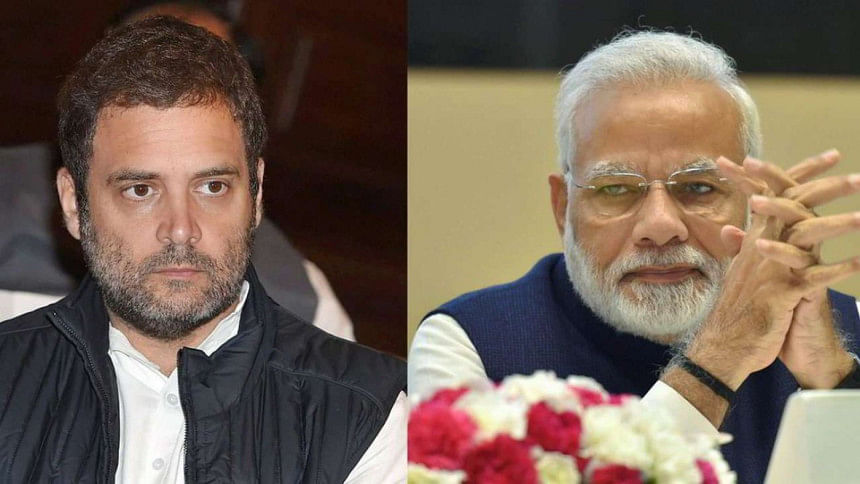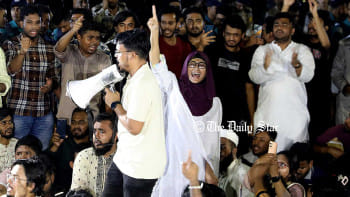Looking at some of the dynamics of India's Lok Sabha election

Some historical glimpses shed a very interesting light on the enormous changes that have taken place in India's political landscape since the early days of India's independence. One can say that throughout the period of Pandit Nehru and later, of his daughter Indira Gandhi, up to the mid-eighties, the political framework was far less complex. The results were predictable and almost a forgone conclusion. With his fabled stature not only in the domestic arena but in the wider global politics, Nehru's position was unchallengeable. He had no rival or adversary. Besides Nehru, there were formidable figures in Congress like Patel, Maulana Abul Kalam Azad and so forth, contributing to the unassailable position of the party. Having played the vanguard role for India's independence from colonial rule, Congress reigned supreme in early decades. Some smaller parties which got only small crumbs of share in the legislature were practically anonymous (as shown in the statistics below).
Today, the electoral scene is vastly different, very defused and marked by baffling diversity and great unpredictability. The complexities that define India's electoral scene makes analysis a daunting job. Unlike in the early days, leaders with national credentials are few. Narendra Modi has been in some sense an exception in today's context. His commanding performance in his home state Gujrat propelled him to a national stature. Mr Modi is an enthralling orator. He also successfully weaponised Hindutva or promotion of Hindu interest and culture, to construct a vote bank. Whether this is a wise strategy in the long term is another matter. His policies have shown that they are divisive and have triggered a nationwide reaction. Regional leaders are now trying to mobilise an anti-BJP front, though only time will show if this enterprise leads to anything. The recent meeting in Kolkata between Andhra Pradesh Chief Minister Chandra Babu Naidu with West Bengal CM Mamata Banerjee was an effort in this direction.
Here are some of the early Lok Sabha election results:
i) First Lok Sabha election, 1952-57; 483 seats. Congress won 364; CPI 16; Socialist Party 12.
ii) Second Lok Sabha election, 1957-62, 494 seats. Congress won 371; CPI 27; Praja Socialist Party 19.
iii) Third Lok Sabha election, 1962-67, 494 seats. Congress won 361 under Indira Gandhi's leadership; six other parties got double digit seats.
iv) Fourth Lok Sabha election, 1967-70 (the first after Nehru's death); seats 520. Congress under Indira Gandhi won 283 seats; six other parties got double digit seats.
Up to 1984-89 election, Congress's domination continued except for a brief period following Mrs Gandhi's emergency in 1975, a time of infamy and the only break in India's democratic politics. It is from the early nineties after Mrs Gandhi's departure from the political scene and Mr Rajib Gandhi's first term that the trend of a single party dominance came to an end and a pattern of alliance system emerged. The fact that in this difficult landscape, BJP under Mr Modi achieved an impressive absolute majority in 2014 Lok Sabha election is testament to his political acumen.
As India approaches the Lok Sabha election shortly, Mr Modi's BJP is having concerns. A sense of overconfidence was behind some policies that have become contentious and have had a political cost. A red light began to blip after a resurgent Congress Party won state assembly polls in three heartland states, Rajasthan, Chhattisgarh and Madhya Pradesh in December 2018.
On the whole, India's economy has been in good shape. The Economist magazine said that India's growth rate is better than most big nations. So in that important area it seems the ruling party is safe.
In Indian politics, and for that matter anywhere else, the power of money is a crucial factor in elections. Recently, with the polls about two months away, BJP government used what was meant to be an interim budget to dispense favour to important segments of voter's social security schemes to placate farmers, workers in the unorganised sector and youths ("Modi government's last attempt at wooing voters", The Daily Star, February 7). This largesse will take immediate effect before the start of the new financial year in April. The Congress leader Rahul Gandhi made an announcement of a minimum income guarantee for farmers. It may be noted that as election time comes, ordinary people get empowered.
The Economist complimented the BJP government for its record on corruption, and noted that it is less corrupt than the one it succeeded. It also improved infrastructure, made bureaucracy more efficient and targeted more aid towards the poor.
Turning to the areas of vulnerability, India's state-owned banks have been badly managed. They have given too many bad loans and are now chary of giving new ones. In November 1906, the scrapping of high currency notes afflicted the informal sectors.
In this year's elections, BJP's use of Hindutva as a political apparatus will be on test. It worked in 2014, but how far that success can be repeated is a big question. BJP's passing of a contentious Citizenship Bill in Lok Sabha on January 8th this year has caused tension. The bill proposes to grant citizenship rights to all undocumented non-Muslim immigrants. In Assam, millions of people were branded as foreigners and stripped of their citizenship last year. The government's argument is that Hindus, Sikhs, Parsees, and Christians from three Muslim countries, Bangladesh, Pakistan and Afghanistan, are persecuted. Undocumented workers from Sri Lanka, Nepal and Myanmar are excluded. Assamese are concerned that this law will turn Assam into a Bengali majority state with the influx of Bengali Hindus. The bill has drawn criticism for making religion the basis for citizenship and thus altering India's secular character.
Although Congress's victories in three state assembly elections and signs that Rahul Gandhi has matured as a leader are interesting developments, we have to wait to see how the situation evolves as the election nears.
The three non-BJP political figures who are in the limelight are Mamata Banerjee (West Bengal) Mayawati (UP) and Chandra Babu Naidu (Andhra Pradesh). None of them alone looks like a threat to Modi. Their appeal does not seem to transcend beyond their states. The question is, can they rise above their personal ambitions and combine effectively to mount a serious challenge to the BJP. At this point, it seems, these elections are for Mr Modi and BJP to lose.
Ziaus Shams Chowdhury is a former ambassador.

 For all latest news, follow The Daily Star's Google News channel.
For all latest news, follow The Daily Star's Google News channel. 



Comments